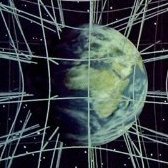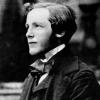All Activity
- Past hour
-
I'm down to experiment with any such configurations. Right now I am working with the usual linear arrangement and struggling to get enough force out of it. I can tell that its working in that it will pull a paperclip sideways if I dangle it like a pendulum, but it is not generating enough force for me to even feel it. So I think the first hurdle is going to be figuring out what my minimum power supply is going to have to be. Since I want it to be as small as possible, that means figuring out how to design the most efficient coil.
- Today
-
Yeah and now, with $$$ signs in his eyes, Trump is actually accusing Zelensky, a man who has out-Churchilled Churchill for his country, of being a dictator! WTF?
-
A cyclone requires an energy input. It’s not something that just happens with a ”kick start”
-
Well, it looks like that the US seeks to "normalize" relationships with Russia and hang Ukraine out to dry. Russia meanwhile is enticing businesses: https://www.nytimes.com/2025/02/19/world/europe/trump-russia-ukraine-putin-trump.html Blood money.
-
I had a new thought about all this. It could very well be a, close as you can get to a perpetual motion machine. The slightest Breeze might kick start a Cyclone. The air it pushes out feeding back into it self.
-

Mass and curvature (split from Question about matter and space-time)
swansont replied to Dejan1981's topic in Relativity
You’re claiming no curvature despite the energy not being zero. -
Thank you, Paul. This was helpful.
-
Here is the rating plate on my heat pump. Note it is not the window or protable variety. The cooling mode has about 10% less capacity than the heating mode.
-

Gap between life and non-life (split from What if god...)
TheVat replied to Khanzhoren's topic in Biology
There's some pretty interesting theorizing out there, on how early anaerobic metabolism could get started. Iron-sulfur world is one example. (this is another one depending on hydrothermal vents, of which I'm a fan) Looks at how complexity can become self-accelerating, which could be a key development. https://en.wikipedia.org/wiki/Iron–sulfur_world_hypothesis The carbon fixation metabolism became autocatalytic by forming a metabolic cycle in the form of a primitive sulfur-dependent version of the reductive citric acid cycle. Accelerated catalysts expanded the metabolism and new metabolic products further accelerated the catalysts. The idea is that once such a primitive autocatalytic metabolism was established, its intrinsically synthetic chemistry began to produce ever more complex organic compounds, ever more complex pathways and ever more complex catalytic centers.... -
The worker buyouts and layoffs in the federal government are really not helping. Also, the forcing of telecommuting staff back into the offices will probably cause some disruptions in work. There's also a hiring freeze at SSA, and new legislation, the Social Security Fairness Act, which is slowing things down. https://www.cbsnews.com/news/social-security-administration-ssa-social-security-fairness-law/
-
The OP question should be changed to "Is it in the interest of SSA not to delay processing of applications for benefits?"
-
+1...but do you really expect them to figure it out? What with Biden being at fault for the upcoming inflation?
-

Gap between life and non-life (split from What if god...)
studiot replied to Khanzhoren's topic in Biology
One point I keep making that only swansont seems to appreciate concerns 'precursors'. Most replies seem to assume there is only one 'precursor', which is of course, impossible for building more complex molecules. But not only do we need at least two precursors and reactions, all the evidence suggests that we need a whole chain of them. The important point is that we do not know the length or composition of that chain. These fact pose immense difficulties in estimating overall probabilities and Ken's efforts are far too simplistic. For instance the reaction that produces precursor A may occur in one galaxy and the reaction that produces precursor B may occur in another or at a time beyond the lifetime of the A molecule. And the new AB molecule must have a lifetime long enough to participate in the next reaction for the next stage. The treatment of the volume over which the concentration is calculated is important. So selecting nice concentrations and reactions rates is unviable. If I were asked to suggest a calculation scheme I would suggest assigning partial probabilities to each stage of a probability tree and considering the consequences of 1, 2, 3, 4 ....n stages. This approach is taken in engineering Limit State Analysis and Design and that is complicated enough; the reaction pathway to life almost certainly has many more stages. -
The update on the issue: none. More than three months later, my application is still pending. All attempts to get a hint from SSA on why it takes so long, failed. SSA in the US tells me to contact their office in DR. A phone message in their office in DR plays for 9-10 minutes and then disconnects. Awaiting their email response, for two weeks now...
-
If you are going to put it or them into a card then you need to increase the turns not by the usual linear lineup of one alongside the other but in a flat spiral fashion. In order to mechanically couple this to the effort use a mechanical membrane, rather than a central push rod.
-

Mass and curvature (split from Question about matter and space-time)
studiot replied to Dejan1981's topic in Relativity
Glad you are back and had the time to compose that excellent explanatory post. +1 -
A useful word, which was adopted some years ago in our household to refer to decaffeinated coffee, to distinguish it from the unadulterated version.
-
Looking back through this thread, I saw this. Covfefe!
-

Mass and curvature (split from Question about matter and space-time)
Markus Hanke replied to Dejan1981's topic in Relativity
The Einstein tensor describes a certain aspect of overall spacetime curvature, in the sense that it determines the values of a certain combination of components of the Riemann tensor (it fixes 10 out of its 20 independent components). But unlike the Riemann tensor, it is not a complete description of the geometry of spacetime. Thus, the Einstein equations provide only a local constraint on the metric, but don’t determine it uniquely. Physically speaking, mass and energy have of course a gravitational effect, but neither appear as quantities in the source term of the field equations - there’s only the energy-momentum tensor field \(T_{\mu \nu}\). Here’s the thing with this - the Einstein equations are a purely local statement. So for example, if you wish to know the geometry of spacetime in vacuum outside some central body, the equation you are in fact solving is the vacuum equation \[G_{\mu \nu}=0\] which implies \[R_{\mu \nu}=0\] There is in the first instance no reference here to any source term, not even the energy-momentum tensor, because you are locally in a vacuum. During the process of solving these equations, you have to impose boundary conditions, one of which will be that sufficiently far from the central body the gravitational field asymptotically becomes Newtonian; it’s only through that boundary condition that mass makes an appearance at all. Only in the interior of your central body do you solve the full equations \[G_{\mu \nu}=\kappa T_{\mu \nu}\] wherein the energy-momentum tensor describes the overall distribution of energy density, momentum density, stresses, strains, and shear (note that “mass” is again not part of this). By solving this equation along with boundary conditions you can find the metric. You can work this backwards - you can start with a metric, and calculate the energy-momentum tensor. But here’s the thing: if the tensor comes out as zero, this does not mean that there’s no mass or energy somewhere around, it means only that the metric you started with describes a vacuum spacetime. If it’s not zero, you’re also out of luck, because the energy-momentum tensor alone is not a unique description of a classical system. Knowing its components tells you nothing about what physical form this system actually takes - two physically different systems in terms of internal structure, time evolution etc can in fact have the same energy-momentum tensor. That’s because this tensor is the conserved Noether current associated with time-translation invariance, so what it reflects are a system’s symmetries, but not necessarily or uniquely its physical structure. There’s no unique 1-to-1 correspondence between this tensor and a particular configuration of matter and energy, since all it contains are density distributions. IOW, a given matter-energy configuration will have a unique energy-momentum tensor associated with it, but the reverse is not true - any given energy-momentum tensor can correspond to more than one possible matter-energy configuration. Thus it is not useful to try and define matter-energy by starting with spacetime geometry. Yes, they are of course closely related, but the relationship is not just a trivial equality; there’s many subtleties to consider. A zero cosmological constant does not imply a static universe, only that expansion happens at a constant rate. Matter and antimatter have the same gravitational affects, they are not opposite in terms of curvature. -
Dear Mr President. Maybe the guy who thought launching a car into space was a good idea is not perfectly qualified to identify wasteful spending. Also, what do you plan to do when the other 50% of Americans discover that tariffs are paid by the citizens of the country which imposes them? And finally (for the minute), if America was too cold to hold your inauguration outside them you certainly don't want Greenland, it's f%^&*&ing freezing. Yours etc
-

Mass and curvature (split from Question about matter and space-time)
Dejan1981 replied to Dejan1981's topic in Relativity
Amount of energy is always the same in the system. I didn't question this. Idea is that when same amount of mater and antimatter collide, and if we hypothesize that mater is product of curvature of space in one direction, and antimatter in opposite, that the space is going to behave as a wave and result will be irregular wave form that will manifest as energy up to the one level of space curvature and as a mater and antimatter over the same level of space curvature. If mater and antimatter collided in time = 0 and there centers of gravity came to the same place in the space in time = 0 than resulting wave would be zero and energy and mater, antimatter and energy would stop to exist because space would be "flat". This is only mathematical and can never happen in reality. -

Mass and curvature (split from Question about matter and space-time)
Dejan1981 replied to Dejan1981's topic in Relativity
Gμν (Einstein Tensor): we usually say that it describes how spacetime is curved due to the presence of mass and energy, so its not correct to say that mass and energy are not part of field equations. I think that description how presence of mass and energy is result of spacetime curvature is correct also if we describe this variable. The second explanation is the proper way how I think we should describe this. Humans first knew about mass and matter (result of how we sense the world) and only much later about curvature of space, so I think this chronology is reason why we presumed that curvature of space is result of existence of mater and not the other way around. Schwarzschild spacetime is theoretical and it exists on the assumption that the electric charge of the mass, angular momentum of the mass, and universal cosmological constant are all zero. Universe that we live in is not like this. Cosmological constant is not zero for sure because Universe is not static. -
I am trying to fit a solenoid into a greeting card to animate parts of it. I would like it to run on the sorts of power sources that could also be squeezed into a greeting card, so coin cell batteries, or very thin flexible solar panels. To that end, I have been trying to learn about how to optimize the design of a solenoid to get the most bang for my wattage, and mostly running into more and more complications. I am hoping someone can help me understand sort of practical rules of thumb for solenoid design. For example, in trying to keep my solenoid very small in diameter, I wondered if I could make up for it by making it longer. If I understand correctly, the equation for the maximum pull force has number of coils in the numerator and length of the solenoid in the denominator, so making a longer solenoid would be a wash. Right now my current doesn't drop if I measure just the solar panel, vs the solar panel with my solenoid in the loop, so I wondered if maybe I should be using even thinner wire to fit more coils in. Then I found a source saying that as you decrease wire size you fit more coils in but also increase the resistance and decrease the current, so it ends up being a wash. Pulling force is proportional to the number of coils, but also proportional the cross sectional area of the armature. So if I'm limited to 1/4" or so diameter, how do I balance armature size vs space available for more layers on the coil? Is that a wash too? The only thing I've found that seems sorta solid is that I should wrap the whole thing in backing iron, but I cant seem to find an answer about how to size that either. Is iron foil sufficient, or do I really need more like 1/8" of iron to have an impact? Where's the point of diminishing returns?
-
Our AC is "split cycle" rather than the window fitted variety but I would suppose, like our system, some of the latter can do heating as well as cooling. The heating is not from conversion of electricity to heat, but from drawing heat from outside air with a fluid at lower temperature, then releasing that heat inside at a higher temperature. The trick (as I understand it) is to have a fluid that is liquid with a boiling temperature/condensation temperature that is higher than the outside temperature but lower than the desired inside temperature - compression causes it to condense and it gives off heat, then outside it is warm enough (despite being "cold") to boil, absorbing heat. The heat absorbed outside is converted to higher temperature heat inside. (The reverse of what AC does). The amount of heat transferred from outside to inside can be several times the electricity used by the compressor and the fans. Different working fluids and the pressures they work at make heat pumps possible that work in outdoor temperatures well below freezing.
-

Mass and curvature (split from Question about matter and space-time)
Markus Hanke replied to Dejan1981's topic in Relativity
The source term in the field equations is neither mass (which doesn’t appear at all) nor energy (which isn’t a covariant quantity), but the energy-momentum tensor. This tensor describes the local densities of energy, momentum, stresses and strains, but does not give a unique breakdown or distribution into matter and energy. Yes, you can run the field equations backwards and start with a given metric - but that does not give you a unique distribution of matter and energy, just as having a particular energy-momentum tensor does not give a unique metric. In both cases you also need initial and boundary conditions that you must impose. Physically that just means that the same spacetime geometry can result from entirely different distributions of matter/energy. Also, as has been pointed out, curvature actually requires no local sources - for example, Schwarzschild spacetime is completely empty (T=0 everywhere), but still not Minkowski.




